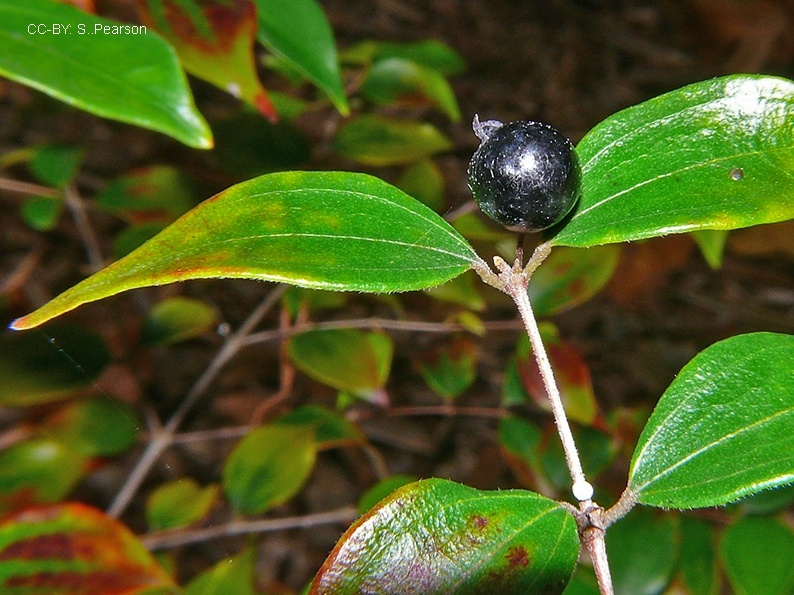Australian Tropical Rainforest Plants - Online edition
Rhodamnia pauciovulata Guymer



Guymer, G.P. (1988), Rhodamnia pauciovulata, a new species of Myrtaceae from Queensland. Austrobaileya 2(5): 515-516. Type: "Queensland, NORTH KENNEDY DISTRICT: Dryander Creek, 4 km ESE of Mt Dryander, 20°16′S, 148°36′E, 9 January 1986, G.P. Guymer 2005 (holo: BRI; iso: BRI, CANB, CBG, DNA, K, L, MEL, MO, NE, NSW, QRS)."
Small trees 3-6 m high; bark red-brown or grey, flaky. Young stems hairy, becoming hairless.
Leaves simple, opposite, rarely sub-opposite. Stipules several in axils of leaves, linear, 0.3-0.7 mm long, reddish. Petiole 1.5-7 mm long, sparsely hairy, green, brown, ± channelled above. Leaf blade ovate, elliptic to oblong-elliptic or oblong-lanceolate, (1.5) 2.5-7 cm long, 1.8-4.5 cm wide, base cuneate to rounded, margins entire, apex acuminate. Leaf 3-veined with two prominent lateral veins arising from the base of the lamina and extending to apex, lateral veins numerous, distinct; intramarginal veins present, distinct or indistinct and close to leaf margin. Domatia absent. Upper surface hairless or sparsely hairy, lower surface velvety with a mixture of dense short interlocking hairs and sparser and longer twisted hairs. Oil glands present, visible with hand lens and transmitted light.
Inflorescences axillary, solitary or paired. Flowers bisexual, actinomorphic, 4-merous. Hypanthium c. 1-1.5 mm long, sparsely hairy. Sepals more or less free to hypanthium, fused only at base, 1.5-2 mm long, triangular or broadly ovate, green, sparsely hairy to glabrous, ciliate on margins. Petals free, 3-3.6 mm long, spreading, oblong-ovate or widely elliptic, glabrous but ciliate on margins, white. Stamens numerous (c. 45-54). Ovary inferior, shortly hairy, 1-locular; style 3.9-5 mm long, glabrous.
Features not available.
Occurs in CEQ from the Whitsundays and Mt Dryander southwards to near Kilcoy in south eastern Queensland. Grows in dry rainforest, vine thickets and littoral forest.
This profile information and associated coding has been adapted from Guymer (1988a), Harden et al. (2014), Snow (2007) and Wilson (2011).





